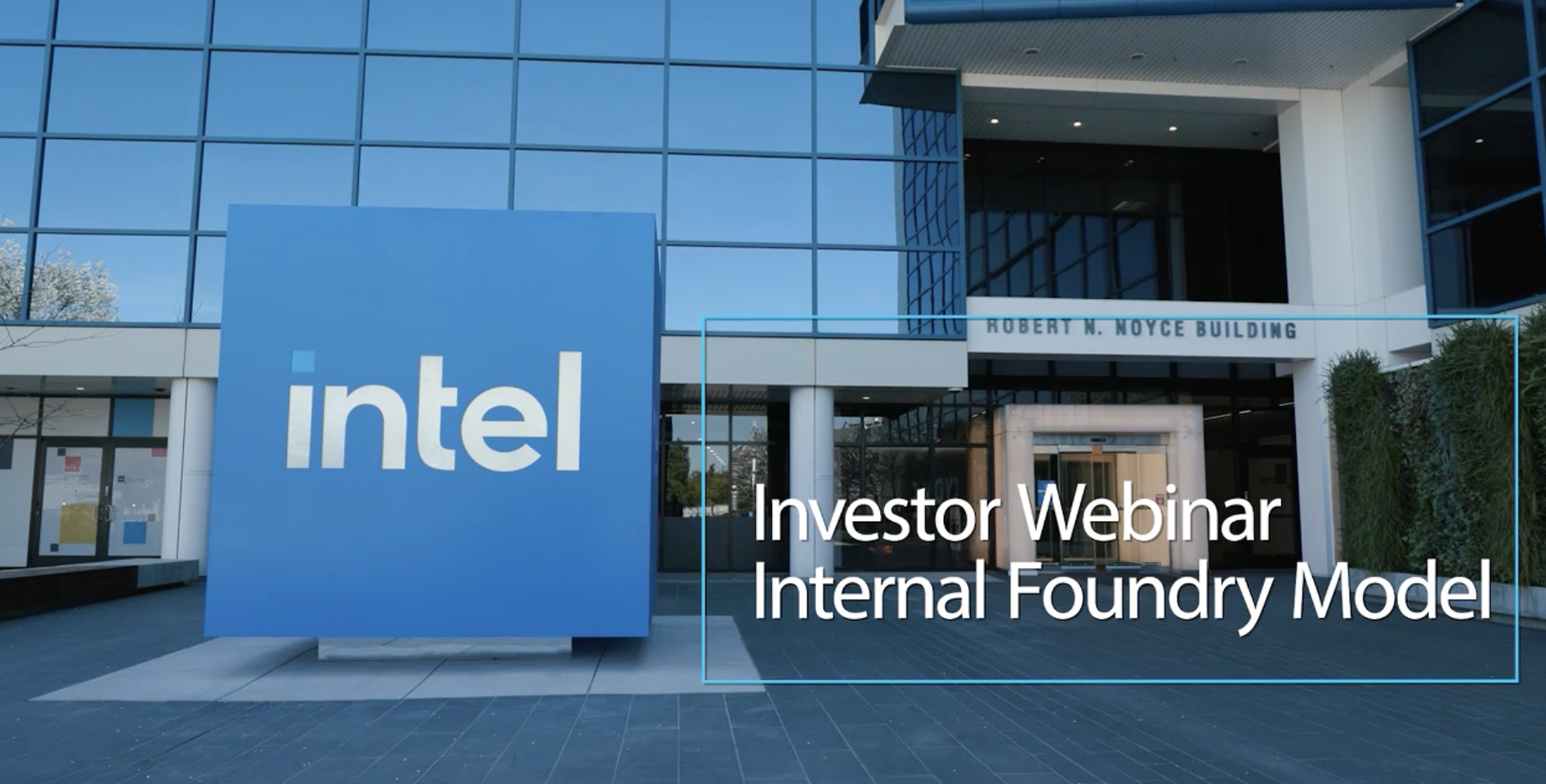
Intel is kicking its internal foundry model into high gear. Today, on a call with investors, David Zinsner, executive vice president and chief financial officer, and Jason Grebe, corporate vice president and general manager of corporate planning, detailed how Intel's manufacturing group, including Internal Foundry Services, will be broken out into its own profit and loss (P&L) statement.
Zisner and Grebe suggested this new IDM 2.0 model will put Internal Foundry Services along with manufacturing and technology development into a reportable unit, who will sell to both external fabless customers and internal business units that will choose to use either Intel's foundries or external competitors. (Intel already has some x86 chips being made at TSMC like the upcoming Meteor Lake processors.)
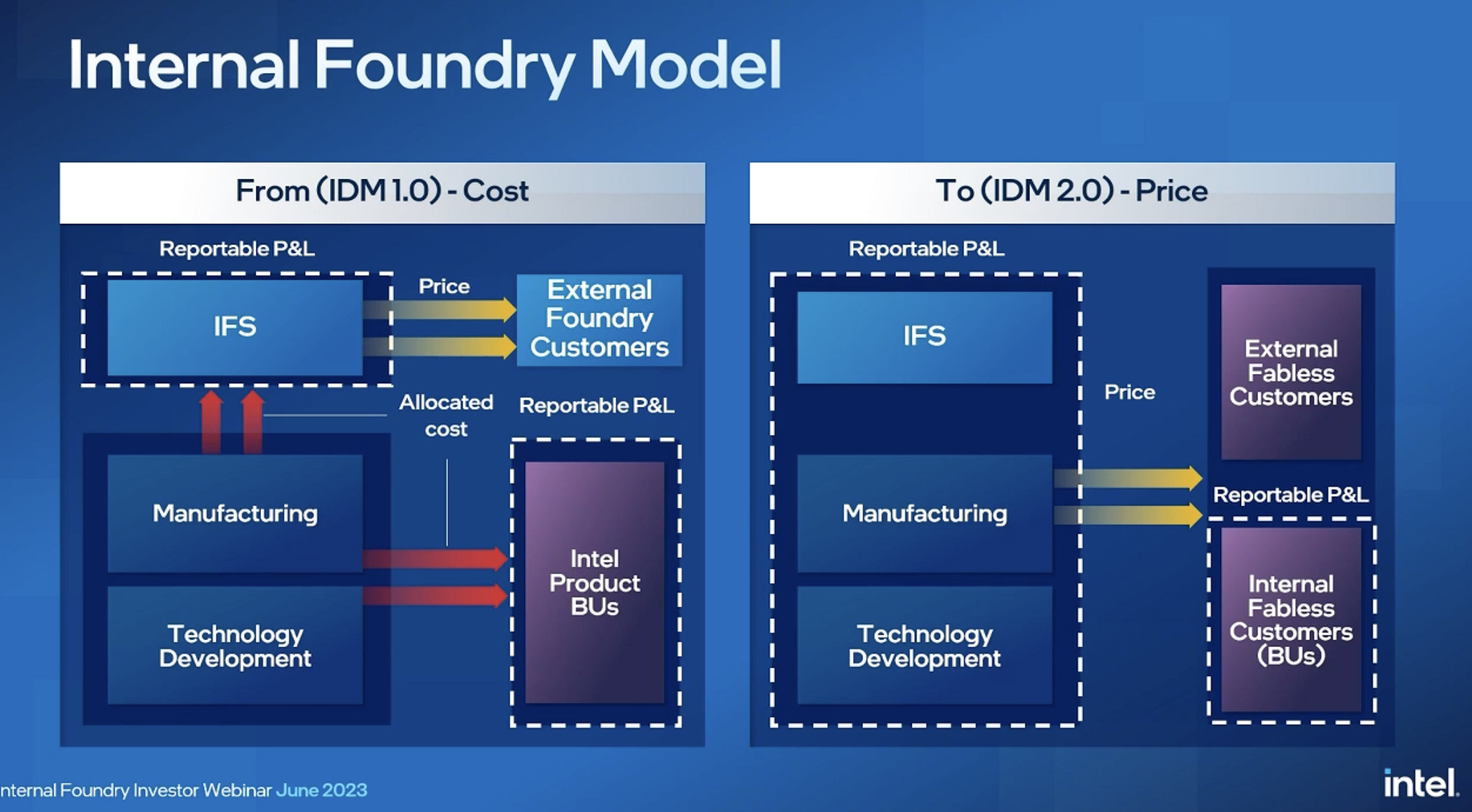
Intel stated that its IDM 1.0 strategy worked for a long time, but the capital required to create new leading edge nodes has increased, and there has been a lag behind rivals in a competitive business environment. Intel does claim, however, that its Intel 18A will come in 2025 and regain process leadership.
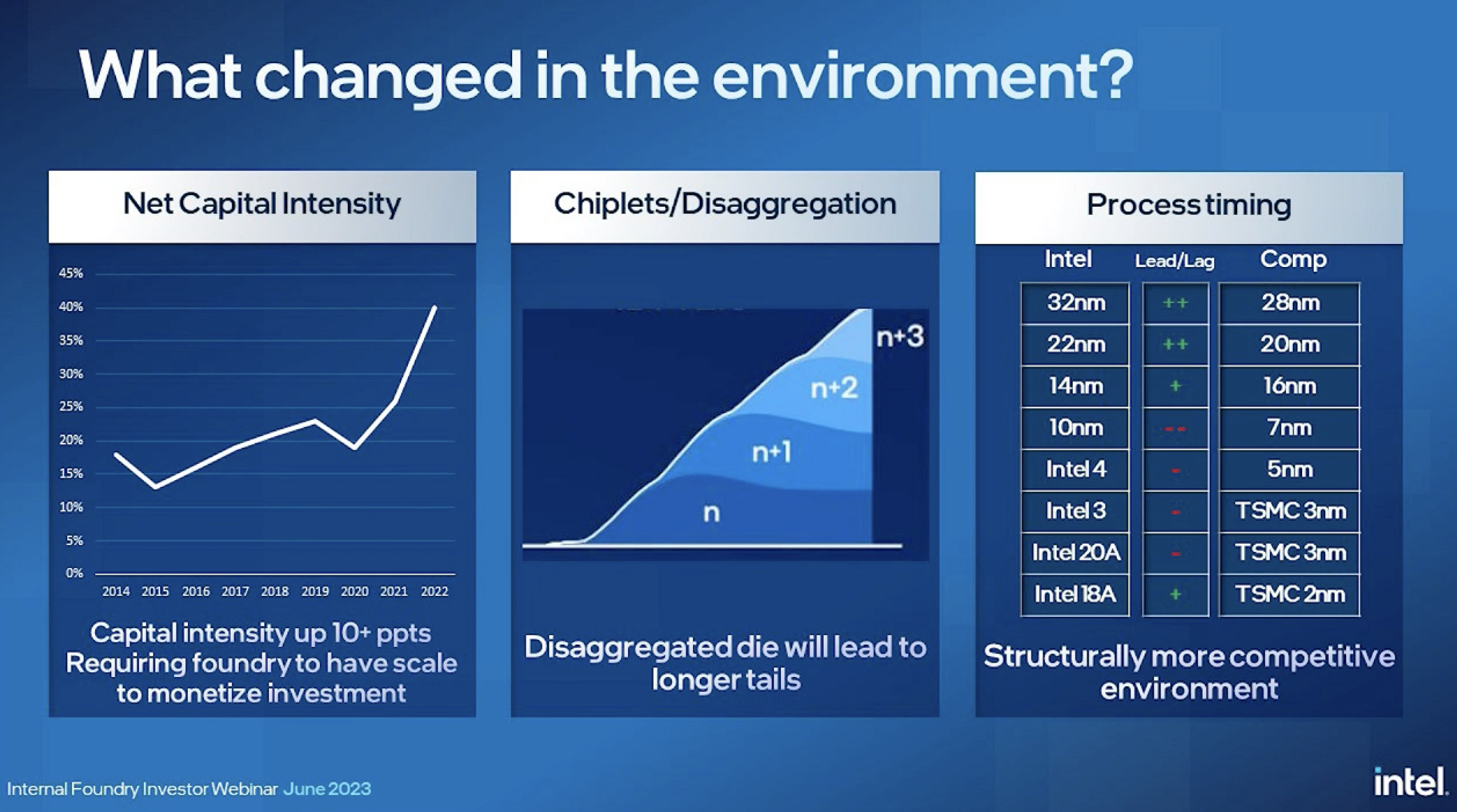
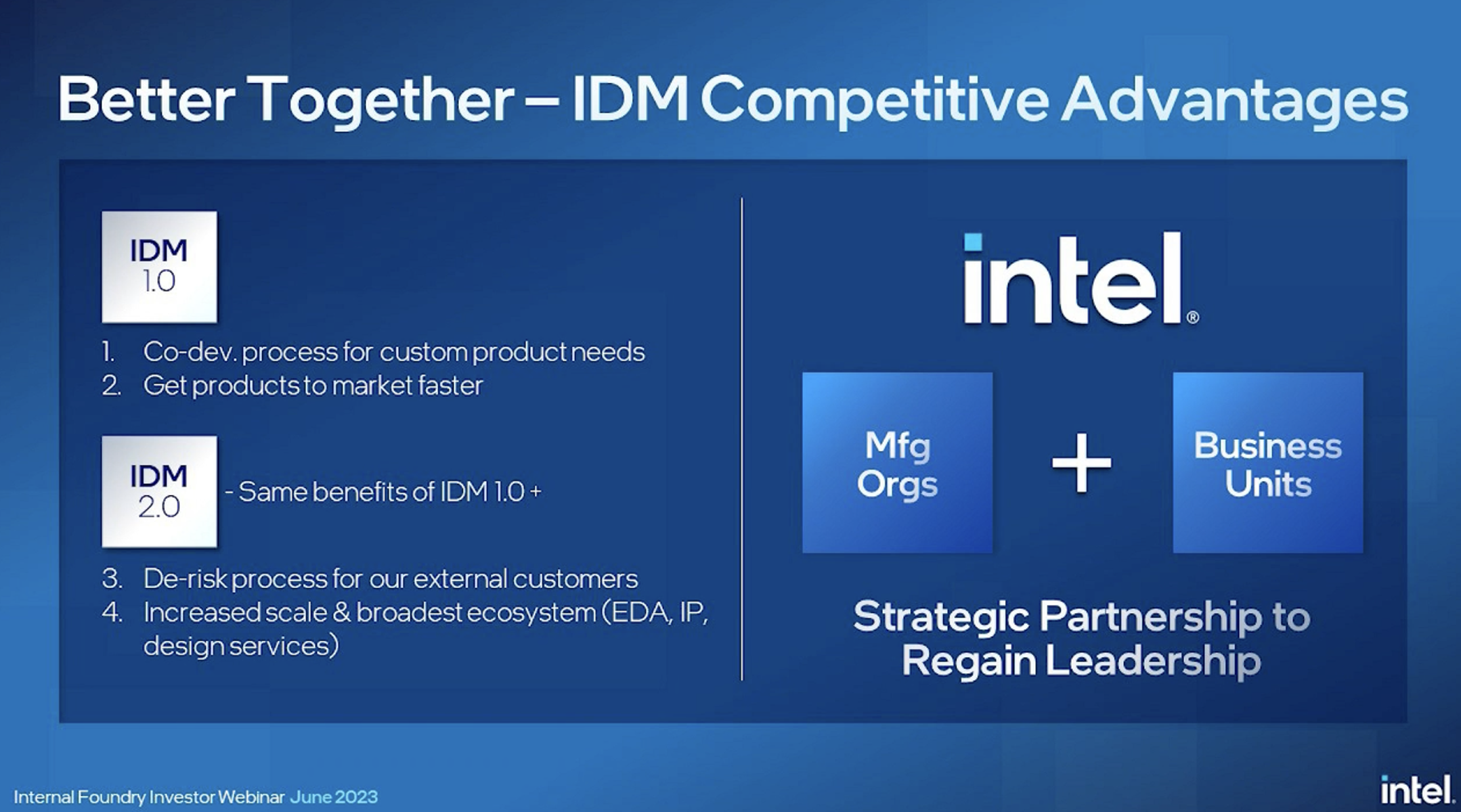
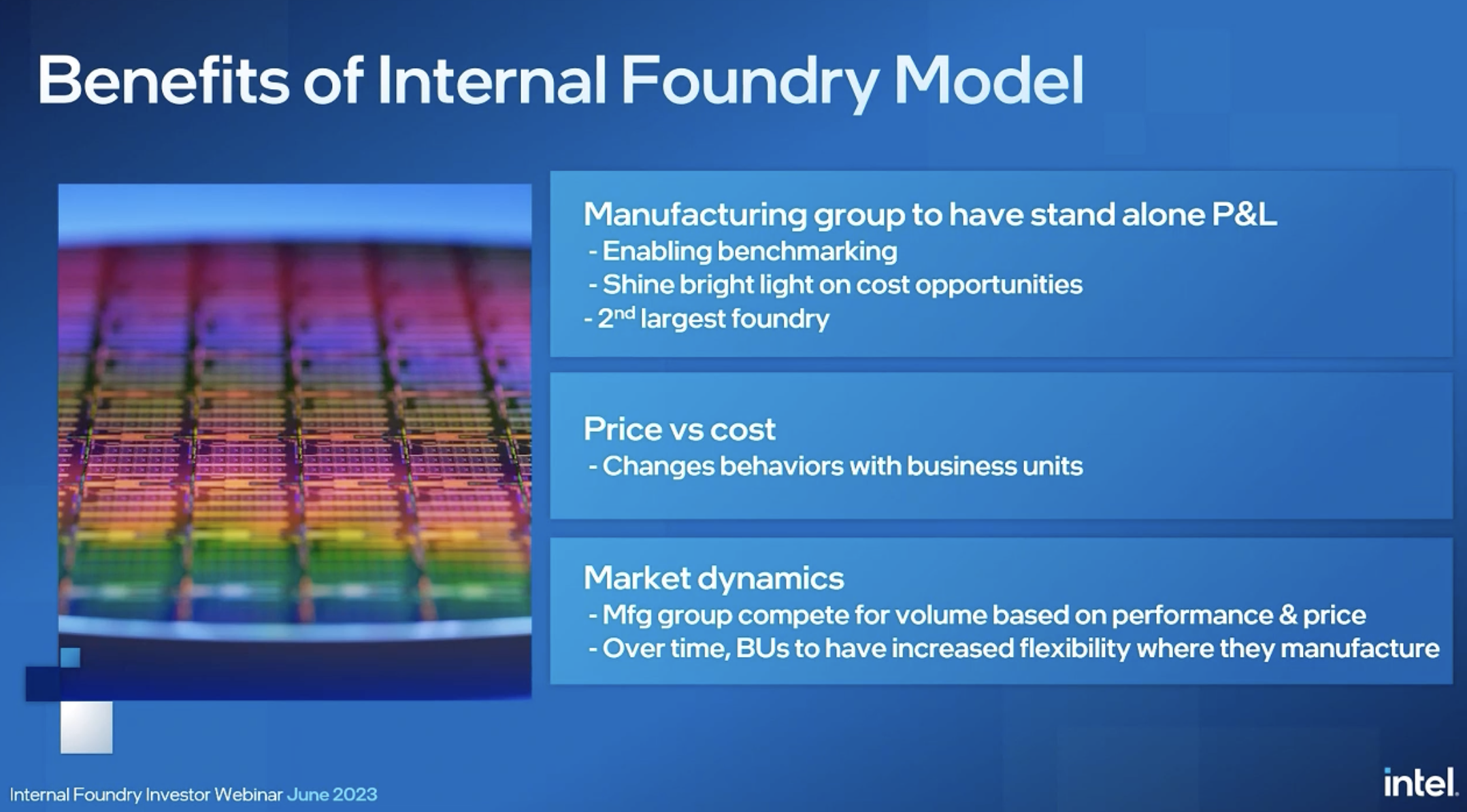
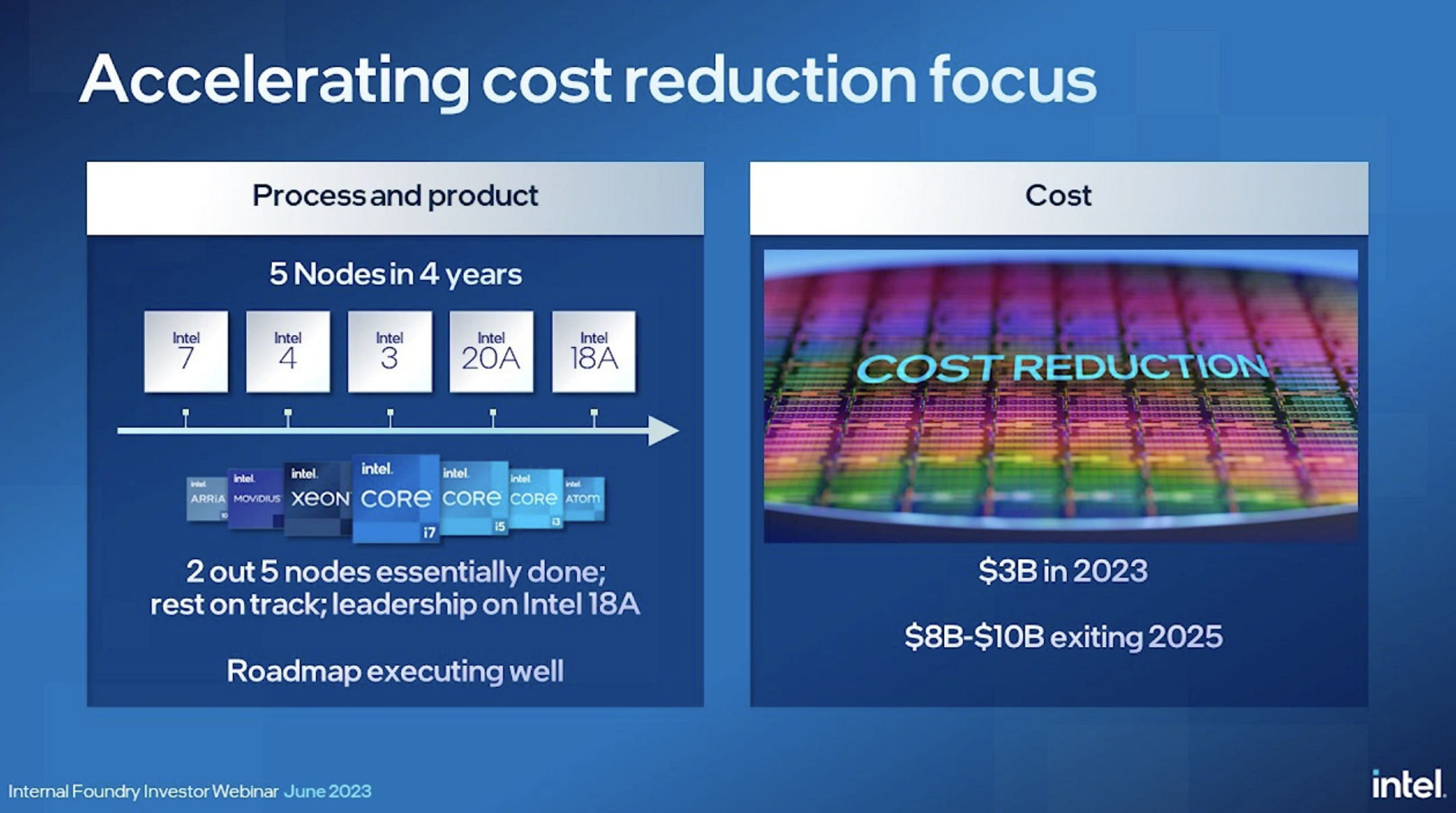
The company states that it's still the goal for the Internal Foundry Model to produce the second-largest external foundry in the industry. It claims that putting this group in its own P&L will also lead to $8 billion to $10 billion in "cost reduction opportunities." including ramp rates and test and sort times based on a "market-based" price. It is likely, however, to start with a negative operating margin.
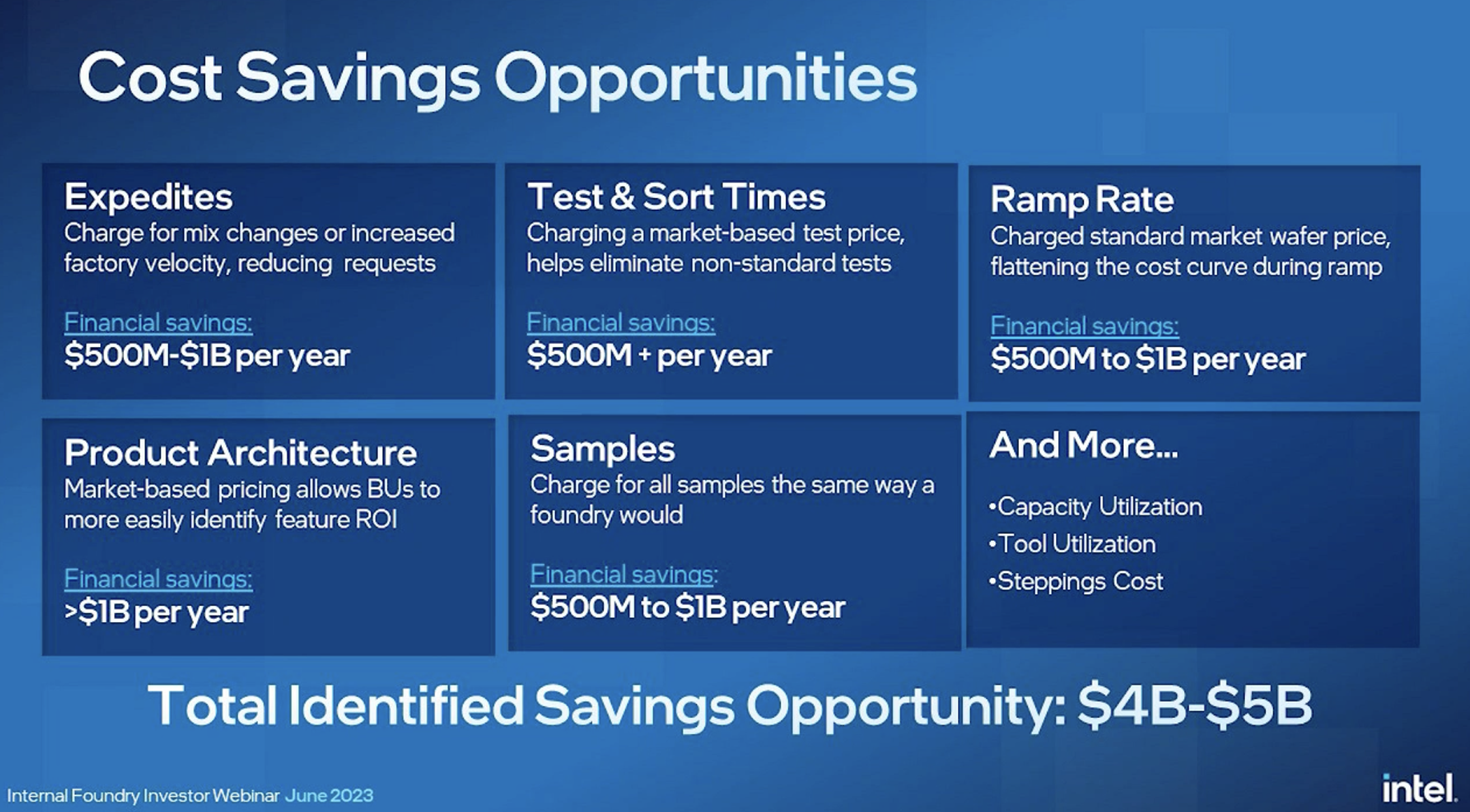
Intel also suggests that keeping the foundry in its own company will provide benefits to external customers. Intel says it will have five internal products on 18A, and suggests that by creating multiple products on a node internally before releasing to external customers, it "de-risks" the node for those outside partners, with more wafer starts and the kinks removed from the process.
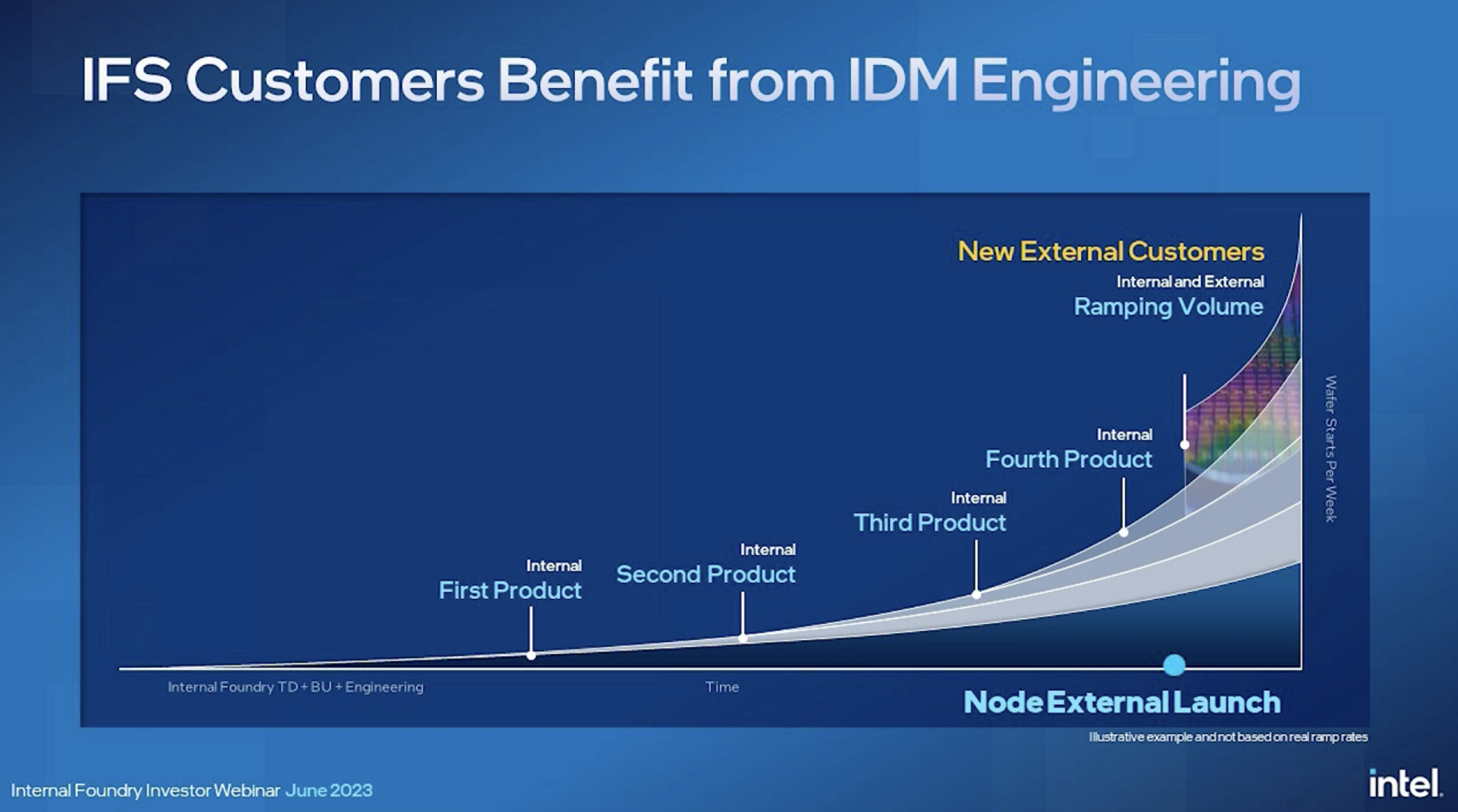
Grebe reiterated that there will be a "compete segregation" of customer data and intellectual property, along with "world class" service and support and an affirmation that there is supply available for customers. Intel will have to compete with the likes of TSMC and other fabs both with external customers and inside Intel to ensure its success.
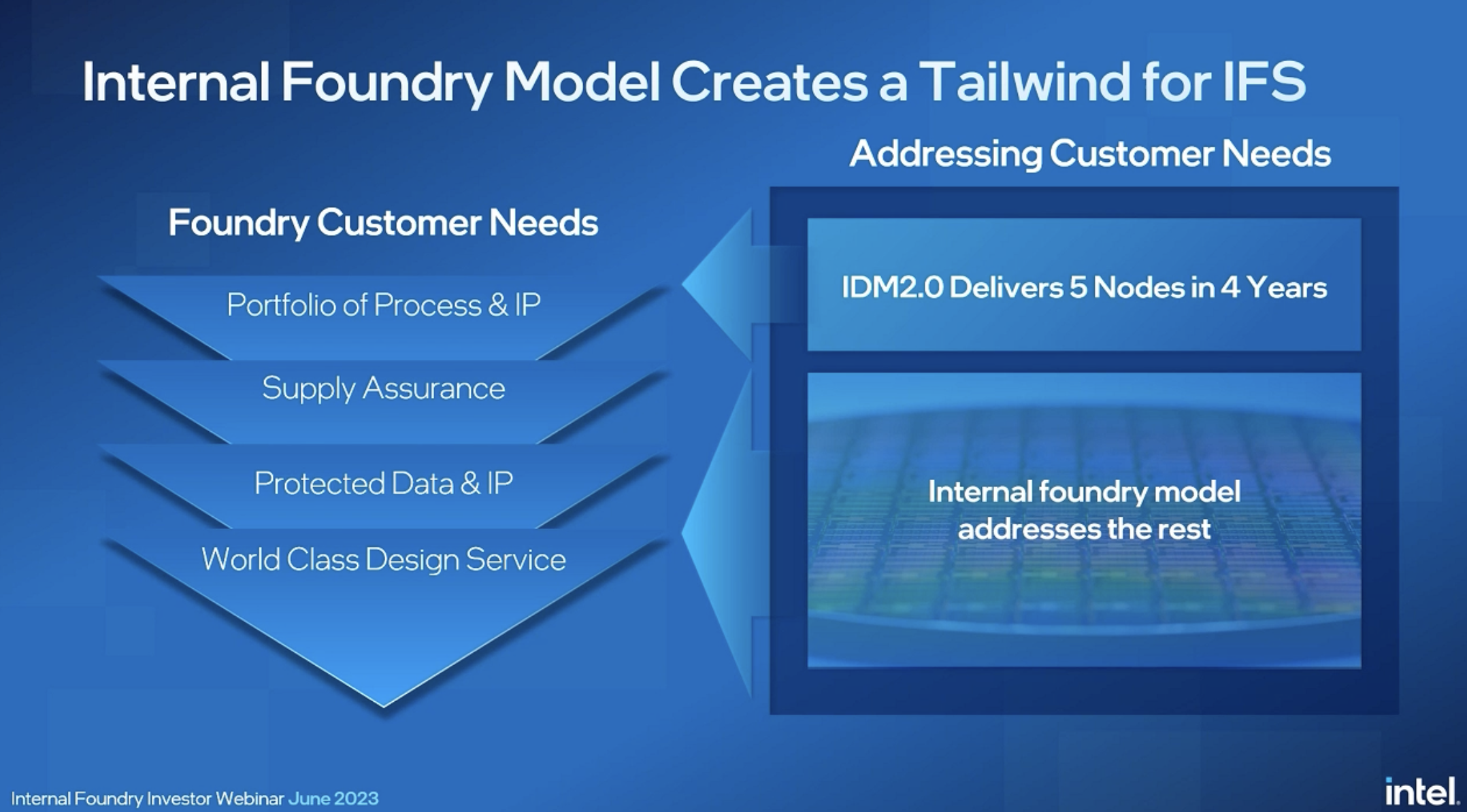
When asked why Intel isn't simply splitting into a fabless design business and a separate foundry business, Zisner said that "we think there is a ton of benefit for having both a product business and a manufacturing business combined." Those benefits, he suggested, include better process technologies and products due to internal teams collaborating, and using internal teams as "customer zero" to increase volumes on new nodes. Zisner suggested he didn't see any requirement to split the business in two. That being said, it seems clear that it is a possibility in the future, where Intel could spin its foundry out.
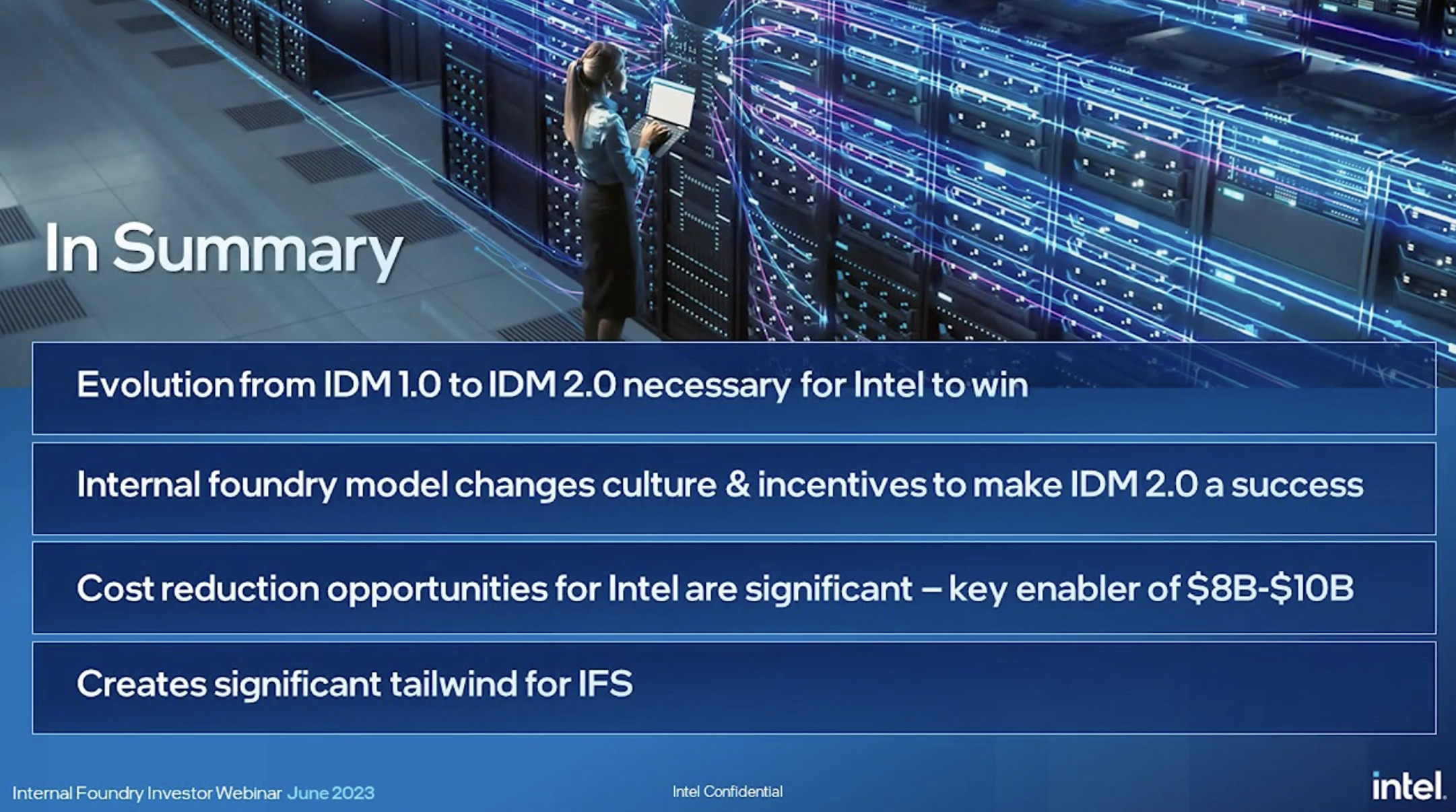
In recent weeks, Intel has recently announced plans for huge investments, including an assembly plant in Poland a $25 billion plant in Israel. These are on top of billions of dollars on new fabs in Oregon and Arizona, as well as a site in Magdeburg, Germany.
Intel stock was down approximately 4.9% on the news.







